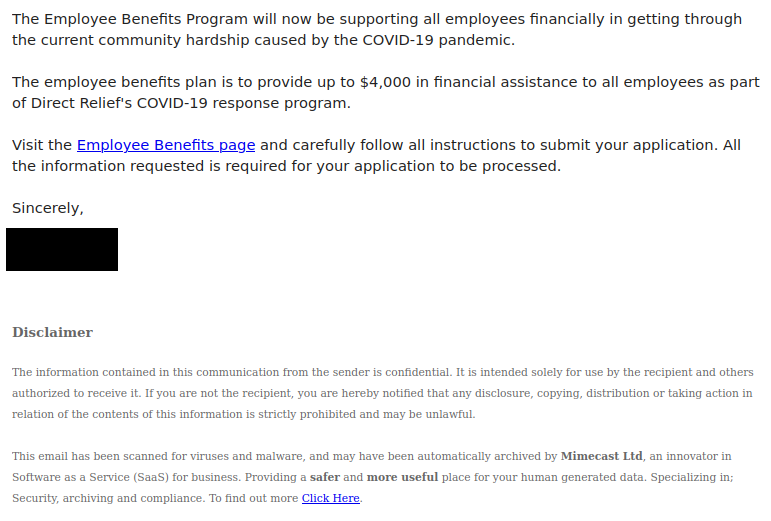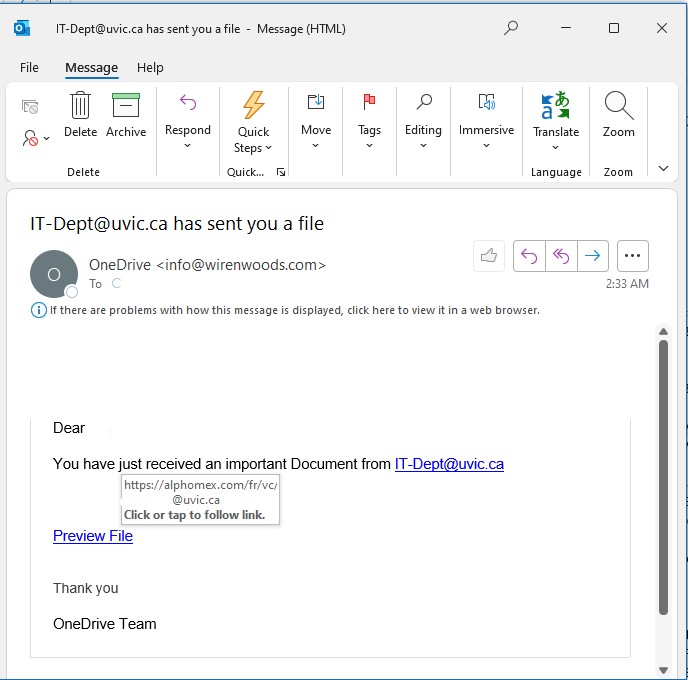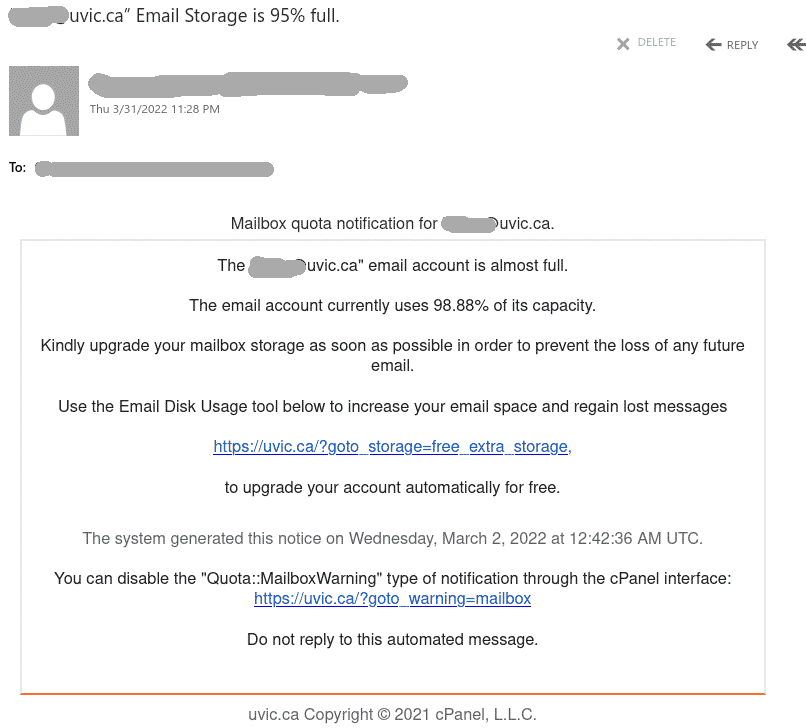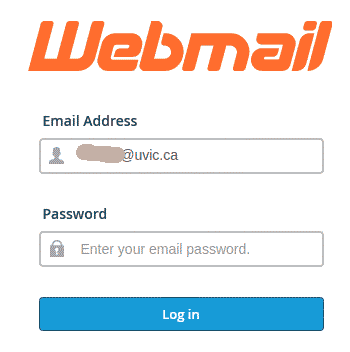A typical phish attempting to take advantage of similar, legitimate emails was recieved by a number of UVic users today. The example below received by our Computer Helpdesk shows how malicious actors attempt to hide that this is a fake email in the sender display name, the url display name, and the body of the email. The link uses a URL shortener service and leads to a real looking, UVic branded login page, with your email prefilled in.
If you are not sure if an email is legitimate, ask your DSS, CHD or IT support expert for assistance!





